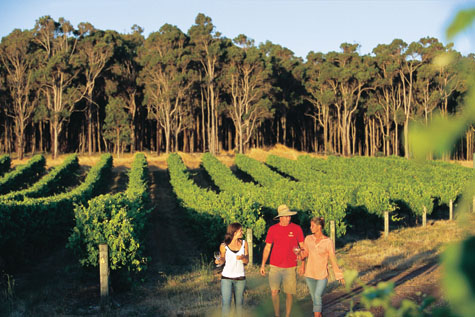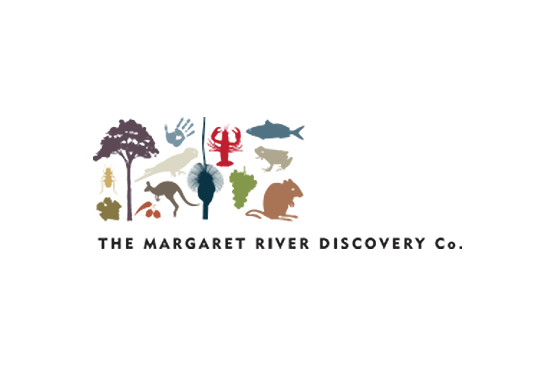Spring is in the air and warm weather trending to 30 degree temperatures for the middle of October is a pleasant change from the cold wet weather experienced in early spring, the vines are loving it. Already we can see recovery in the visual appearance of vine foliage as normal spring growth occurs and newly unfurling leaves are free from the damage caused by recent wind, cold temperatures and light hail.
The early indication of crop load for the 2010 vintage looks promising with many shoots showing 2 or 3 immature bunches. At this stage we call these bunches “Inflorescence” as they are promise of flowering (florescence) and therefore the future crop. From this point onwards we must protect the crop and monitor for pest and disease. Monitoring occurs regularly (at least weekly) and involves time spent specifically looking for pest and disease. In all work practices, vineyard employees are encouraged to be observant and report anything that is unusual. Spraying is done fortnightly to help protect the crop from powdery mildew, downy mildew and other damaging diseases. The chemicals used are Sulphur and copper – both naturally occurring products and acceptable in organic production. Monitoring will show if the need for more specific control methods are required. Other cultural practices such as shoot thinning, fruit thinning and leaf removal can be done to help reduce the risk from disease by allowing sunlight and airflow into the vine canopy. The sunlight has ultraviolet light and this is known to cause sterilization of disease pathogens and airflow allows a reduction in humidity and also indicates that spray chemicals can be efficiently applied to give full coverage within the canopy, both are very important in providing basic control of disease.
A lot of effort is put into minimizing the use of chemicals for disease control. Improving biodiversity in the vineyard environment is a system often put into practice. As you drive through the Margaret River region at this time of year, the colours seen in the vineyard pasture is an indication of the level of effort that some viticulturists are applying to increase biodiversity. With some care it is possible to move away from a monoculture (just growing grapevines) and to include many other flowering plant species into the mix of herbage grown to increase biodiversity. With a trained eye and some basic knowledge of plant species we can see flowering clovers, lupin, daisy, cape weed, chicory, brassica, medics, lotus, vetch. These compliment many grasses including oats, rye, tritacali and native species all grown in the vineyard as part of a greater management system. 
Of course there are also weeds that grow naturally and there are some benefits from a natural balance of species which sometimes requires intervention to achieve the balance. We recognise the importance of biodiversity in plant species within the vineyard, as this forms part of the natural control of pests and disease. Beneficial predatory insects such as the many different types of wasps, lacewings and ladybirds all add to the natural pest and disease control. Many beneficial predatory insects will graze on flowering plants, using nectar and pollen as an energy source in preparedness for the development and emergence of other insects. Other cultural practices extend the benefits of biodiversity, for example when mowing in the vineyard it is common practice to cut alternate rows so as not to greatly disrupt biodiversity and then return a few weeks later to mow the uncut rows; This gives the beneficial insects the opportunity to migrate to unaffected areas of the vineyard and it reduces shock in the environment. Of course it is easy to understand what can be visually observed but we also realise that much within the vineyard goes unobserved. To a great extent this is at a microscopic scale and therefore difficult to see and therefore understand. Such is the case with certain types of beneficial microbiology. Traveling around Margaret River we often see spray carts out in the vineyards, the natural thoughts are that fungicides and pesticides are being applied. While this is often the case, we need to consider that science is allowing us to better understand other facets of plant health and disease control that involve using selected microbiology.
Organic principles are incorporated into normal vine care and there is ever increasing movement away from chemicals to improve the microbiological activity that occurs naturally in soil and also on the vines. It is becoming common to apply compost teas, milk products and other complimentary biologic additives that help enhance the vines immune system and/or introduce competing pathogens that help regulate the spread of damaging disease. Recently we have been applying some selected microbes into soil with the intention of improving plant health and to help with pest and disease control. Of major interest are fungal species referred to as Vesicular Arbuscular Mycorrhiza (VAM). The use of VAM in agriculture is now proving without doubt to be one of the most technical sciences in providing alternatives to chemical pest and disease control while improving plant health that results in higher yield and better food wealth. Simply, VAM works symbiotically with the vine root system to increase the availability of minerals to the vine. A complex outcome with certain species of VAM involves the introduction of naturally occurring organic acids from the selected pathogen to the vine, a system that provides a systemically acquired resistance “trigger” and this helps reduce infection and promotes plant health… Simply, healthy plants grown in healthy soils have fewer problems with pest and disease, a fact that many caring viticulturists in Margaret River are working towards understanding and improving. Contributed by Bruce Pearce
Join us on a behind the scenes vineyard tour on the Margaret River Discovery Company Best of the Best Wine Tour.
About Margaret River Discovery Tours
Sean Blocksidge is the owner operator of the Margaret River Discovery Company, an avid photographer, blogger and South West WA ambassador. In 2010 he won Western Australian Guide of the Year and his tours have been rated the #1 thing to do in Australia on the Tripadvisor website for the past two years.
